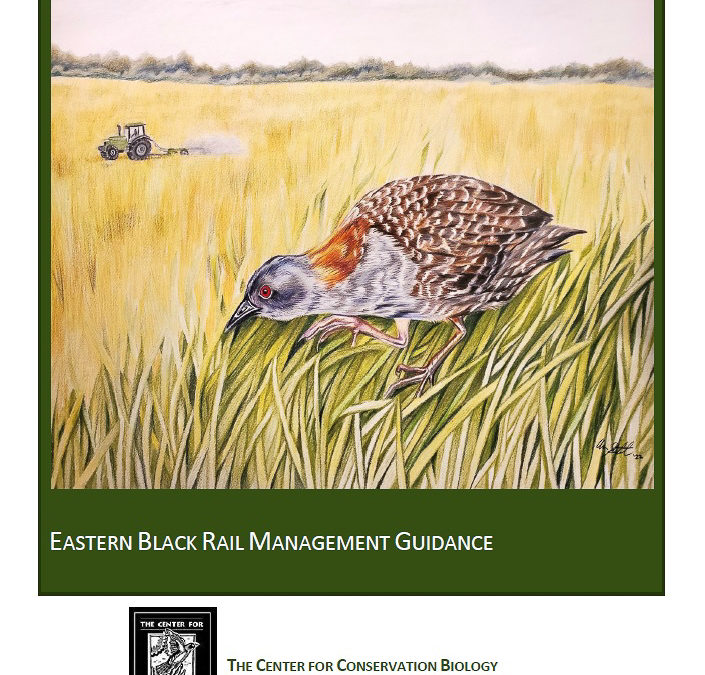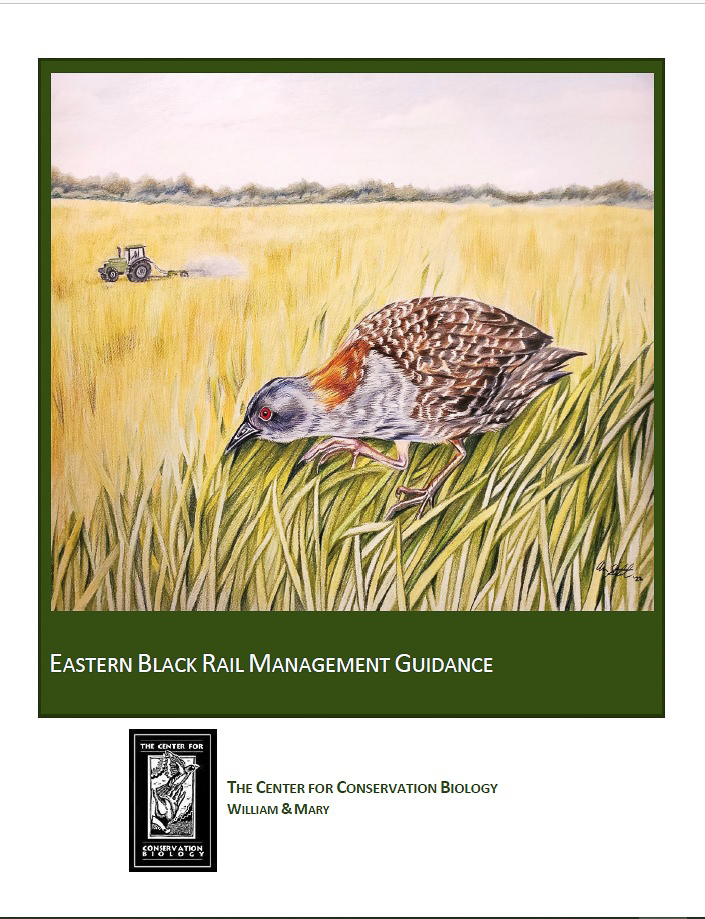Management Guidance for Eastern Black Rail

The Gathering
March 29, 2023
Divergence in Virginia Peregrines
March 29, 2023By: Bryan Watts
3/27/23
The eastern black rail has experienced a dramatic decline including both a 450-kilometer contraction of the northern range limit and a hollowing out of historic strongholds throughout the remaining range. Many local populations have been extirpated. On November 9, 2020, the eastern black rail was formally listed as Threatened under the Endangered Species Act by the United States Department of Interior following through on the recommendation of the United States Fish and Wildlife Service (USFWS) published on October 9, 2018. In addition to the federal status, eastern black rails are listed as Endangered within six eastern states (CT, NY, NJ, DE, MD, VA) and a Species of Greatest Conservation Need in ten eastern states (CT, NY, NJ, DE, MD, VA, NC, SC, GA and FL). Formal designations on both the federal and state levels have already had an impact on engagement and focus by the management community.
In 2016, the Atlantic Coast Joint Venture (ACJV) of the USFWS adopted the eastern black rail as one of three focal species for the program and assumed responsibility for the Eastern Black Rail Working Group. Since that time, the ACJV has organized and rapidly mobilized a consortium of individuals and organizations on behalf of black rail conservation. The Eastern Black Rail Working Group has developed recovery goals focused on two time horizons, including 1) stabilize the population above 300 pairs over the next decade and 2) grow the population to 2,500 pairs over the next five decades.
In recent years, a clear call-to-action has been building within the conservation community to deploy the resources needed to achieve recovery goals. The response to this call has been extremely encouraging. However, questions about where and how to deploy resources have emerged as barriers to action. Progress requires that we answer the question of where and prioritize landscapes for management action. Beyond where to work is the more complex question of what to do and how to do it.
In 2022, with funding from the United States Department of Agriculture and assistance from the ACJV and core black rail working group, The Center produced an Eastern Black Rail Management Guide. This guidance document focuses on removing barriers to management action so that we may take advantage of conservation opportunities for eastern black rails. The report develops an approach for prioritizing landscapes for management based on the distribution of extant populations and dispersal distances, develops a strategy for staging activities, compiles a set of management endpoints, reviews techniques that may be useful in moving habitats toward target conditions and links management needs to priority landscapes. Our hope is that this document will help to accelerate on the ground action on behalf of eastern black rails.





